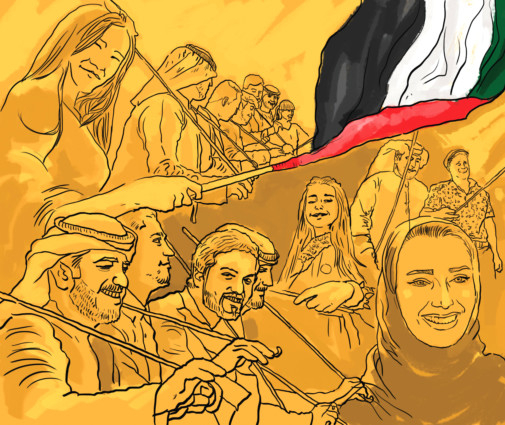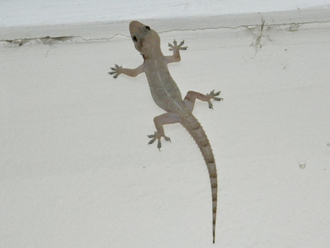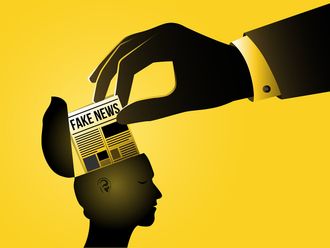
Earlier this week, telecommunications provider du put out a music video titled narzif laha. The song’s title, which can be best translated as “for her, we dance the razfah”(the Bedouin UAE folk dance) showcases dancers from across the country and beyond, beckoning the UAE’s 43rd National Day with flags, smiles and swooping sticks.
After a “Twitterdorsement” by UAE Minister of Foreign Affairs Shaikh Abdullah Bin Zayed Al Nahyan, the video went viral on social media platforms: Twitter, Instagram, SnapChat and just about anything else with the hashtag #Narzif.
The video features mostly young Emirati men performing the razfah in various contexts, like a razfah flash mob popping up where you least expect it. They are seen doing the razfah on the beach, at a mall, on the River Thames and literally dropping a razfah while skydiving. No place is too outlandish for a razfah fix. Afterall, it’s National Day and they’ll dance if they want to. But what is more surprising than the pleasantly bizarre contexts in which the razfah is performed is the performers themselves.
In the video, various social celebrities make an appearance: Sama Dubai TV Presenter Diala Ali is seen riding a horse, flag in hand, while actor/presenter Saoud Al Kaabi flashes a smile at the camera as he yerzefs on. Fast-paced cinematography, soft focus close-up shots of happy Emiratis and lots of dancing; that’s the stuff of National Day campaign videos. This time, du’s doing something different.
From bystanders to participants
It has chosen to include a variation by way of atypical and non-Emirati actors. The ‘others’ are elevated from the status of celebrating bystanders to celebrating participants. And that represents a shift in the narrative. It’s not just traditional Emiratis who can be part of the UAE National Day Story, but others too — Emiratis of all sorts and non-Emiratis. More like real life.
Alongside the Saouds and Dialas, there are social celebrities you don’t usually see on UAE National Day campaigns. There’s YouTube TV show actor @hamoody_bamby in his blue mirror shades and Afro with @Fahood_Taymour.
You can catch a glimpse of Egyptian/American Sharif Fayed and Dubaian health food blogger Secret Squirrel.
Meanwhile, Chinese-Korean comedian Wonho Chung gets much air time; even the Yemeni-Arabic-speaking British/American Max a.k.a. @MaxofArabia makes an appearance, wearing his kashkha swag in fluorescent green. They’re all doing the razfah or waving a flag with grins the size of the Empty Quarter.
There are non-celebrity razfah dancers too: there’s someone to represent the Filipino community; there’s a token West African donning his dashiki and a non-traditional one too; a Pakistani in an embroidered shalwar kameez; and a few Indians meant to stand in for the 50 per cent. There’s a blonde, a dancing ‘westerner’ in plaid; there’s a cricket player, a golfer, a Sa’idi Egyptian and even the UAE Harley Davidson HOGs get a cameo. du spares no expense in making its point, even going as far a getting a denim-clad white guy to do the razfah in front of the Hollywood sign in Los Angeles.
This range of faces, though reductive at times, tells a different kind of story about the UAE National Day and those given the privilege of featuring in a video representing it.
Granted, one can critique the video for inflating aspects of the country’s diversity, and for distorting demographics, but one thing is certain here: this move reflects a change in the narrative – that the UAE belongs to more than an imagined idea of the Emirati; it belongs to everyone in it.
It’s important to mention that the razfah was, in the days of yore, a war dance. Two lines of male warriors would perform the razfah to indicate confrontation. This, like the UAE itself, has changed. The du rendition takes the razfah to another level; it hijacks the dance into an urban environment and stamps a joyous face on it, adding unforeseen players in the mix. A war dance becomes celebration, male exclusivity gets challenged, Emirati particularity is shuffled and the result is a festive ode to the UAE’s most pronounced legacy: heterogeneous harmony.
The du video and works like it propose a new face for the UAE National Day; one that is diverse in its features. It is immersive and interactive, coexistent and adaptive. It legitimises the visual participation of non-Emiratis in telling the Emirati story, and brings non-traditionally aligned Emiratis into the centre of the Emirati identity narrative. What was once the dominion of UAE nationals or those made to look like them with prop abayas and egals is now accessible and open to others to share and tell. And that’s more like it!
Other attempts towards a more expanded portrayal of the UAE story are more often visible in the filmmaking world. Ali Mustafa’s 2009 feature film City of Life did its bit in exploring the layered identity of Dubai as a city of different communities. He once again touches upon the idea in his most recent film From A to B, which opened at the latest edition of the Abu Dhabi Film Festival. Short films have also tried their hand at reclaiming the UAE narrative – this can be seen in works such as Mohammad Al Otaiba’s short film Happy Birthday Younis and Heba Abu Musaed’s Abu Mohammad.
Works like this not only decimated cultural barriers rampant in the portrayal of the UAE, but also demolished walls that have long stood stubbornly in the path of the visual identity of the UAE’s cultural production, involving the country and its inhabitants. Whether or not that was the intention is besides the point; the works were made and are now forever a statement about the moment in time the UAE finds itself in. At 43, the UAE you see in the du video and more is a place more secure in its identity, more embracing of its multiplicities, celebratory of its complexities.
The Expo 2020 bid campaign was key in marking this shift in shaping the imagination of the UAE. A bid for a national event, it opened up its doors to everyone in Dubai, inviting them to #BePartofIt — and part of it they were. It changed the language from marketing the UAE as a place where people of various cultures and nationalities coexist to a place for equal opportunity storytelling and ownership. Unlike any other campaign, due to scale and approach, the #Expo2020 bid campaign managed to carve ambassadors out of all of Dubai’s residents. By including them in all their manifestations — their faces, their voices, their stories —everyone got behind the bid and rooted for #Expo2020 … and won.
This is the UAE we know, this is the UAE we see around us. It is high time the visual culture and its production reflected the same. This December 2 may everyone, however long they’ve been here and however long they stay, have a happy UAE National Day.
Butheina Hamed Kazim is a Fulbright Scholar of Media, Culture and Communication at New York University.










